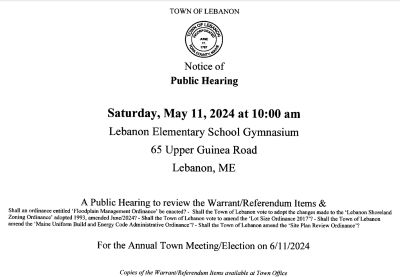
ROCHESTER - Students in multiple Rochester schools have taken on the roles of citizen scientists, thanks to a partnership with the University of New Hampshire's Cooperative Extension and the Leitzel Center.
Through its collaboration with UNH's Schoolyard Science Investigations by Teachers, Extension Volunteers and Students (Schoolyard SITES), students at five schools are exploring a variety of scientific areas through hands on research and experimentation.
Rochester's Gonic School students are currently researching local birds' habitat preferences, while classes at Nancy Loud School and Chamberlain Street School are studying local birds and their feeding preferences. Meanwhile, students at the William Allen and Maple Street Magnet Schools are exploring how precipitation varies as the seasons change.
Schoolyard SITES is a UNH research study that investigates a new professional development model for elementary school teachers, while giving students opportunities to explore science on a deeper and more engaging level. With support from the UNH Cooperative Extension science volunteers, teachers develop science investigations that incorporate student learning goals and the Next Generation Science Standards.
Each teacher-volunteer team designs and teaches a science project that is relevant to the school district's curriculum and school site. Schoolyard SITES students engage in real-world, problem-based learning and investigate their schoolyard using the scientific process, and they contribute valuable data to citizen science initiatives.
"My students love being Citizen Scientists," Maple Street Magnet School teacher Dani Stevenson said. "The experience of measuring and recording precipitation data has given them a hands-on, authentic learning experience."
The projects have helped deepen students' connection to their community, while enabling them to do real world science work outside of the traditional classroom setting. The Schoolyard SITES work has also reinvigorated the teachers guiding the projects.
"Schoolyard SITES has renewed my love of teaching science," Nancy Loud School teacher Meghan Walkama said. "By bringing Citizen Science to my classroom, my students are more invested and engaged in real world science."
Students at Nancy Loud School are sharing their work with their peers at Chamberlain, who are conducting similar experiments, while also connecting with students around the world via Project Feederwatch. As part of their work, students are observing the bird feeders they've set up, logging sightings of specific bird species and documenting the birds with photos to enhance their research.
"The Schoolyard SITES program is a great learning opportunity for both our teachers and our students," Superintendent Michael Hopkins said. "I'm so glad that we've been able to forge this partnership with UNH so that we can enhance our science curriculum from the top down and create dynamic classroom experiences."
UNH State Extension Specialist and Affiliate Associate Professor Lara Gengarelly added, "Schoolyard SITES is a new model we are exploring. This year it's been fantastic to see the teacher-volunteer partnerships evolve and observe the creative ways they are engaging students in problem-based learning focused on a range of science topics such as local birds and weather."
Jordan Mayblum writes stories for the City of Rochester.












